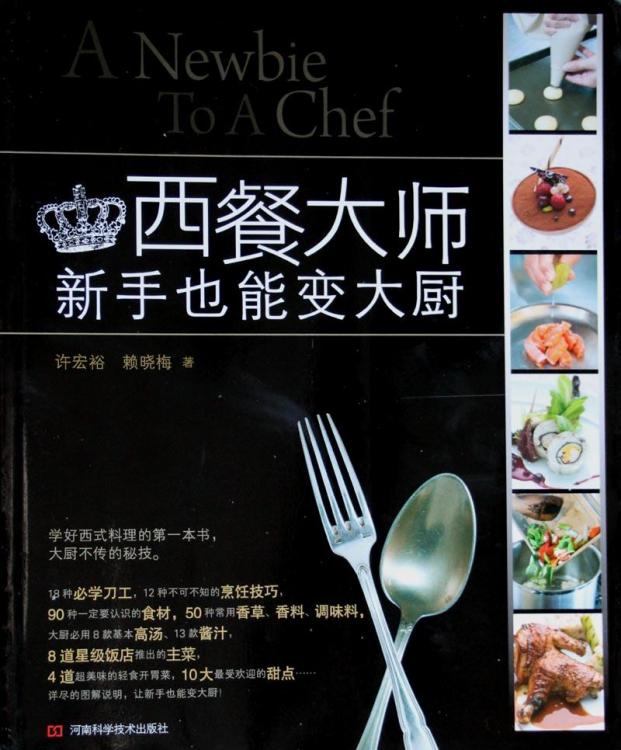I bought this as a gift for my dearest friend, a young Chinese woman who likes to experiment. She spent a year in the USA and, although she missed Chinese cooking, now likes the occasional western style meal.
I'm sure she won't mind me sharing it with you before I hand it over.
The English name is actually a loose translation of the Chinese subtitle. In Chinese the book is called 西餐大师 (xī cān dà shī) which means "Western Food Master). It is written by two non-western cooks from Taiwan.
The book begins with what it calls an introduction to western food, but actually only briefly covers French and Italian cuisine, cramming in every cliché they can think of.
It then goes on to chapter two - "Main Ingredients and Flavors".
It begins with a diagram of a cow, showing the location of the various cuts. This follows the American model rather than the French or British or ... It also gives a short description of various cuts.
The the same again for pigs.
Lamb, poultry and game get a short paragraph each.
Bizarrely, the attempt the same diagram technique with a useless depiction of a fish, pointing out that it is a fish, where its eyes are, where its skin might be found and the general direction to look if you want to see its tail. The only possibly useful information is the gills for those who are very ignorant of fish.
A bit on general seafood, then eggs.
This is followed by Herbs and Spices where they list and illustrate several examples, the vast majority of which are unavailable in China.
Then dairy and fat. Milk, butter etc. It also helpfully lists 21 cheeses none of which I've ever found in China.
Chapter three is more sensible. Knives and cutting skills. It introduces the range of western knives, how to grip a knife and how to slice, dice, julienne etc. It also covers jointing a chicken and filleting fish.
Given that most Chinese home cooks (and pros) only have their Chinese cleavers, this is quite useful.
Chapter 4 lists and explains the various cooking techniques: blanching, boiling, steaming, sautéeing, deep frying, braising, stewing, roasting, grilling.
Also here is a little bit on tenderising meat. (For some reason, they translate this as "softeding".)
Chapter 5 finally gets to cooking. We start with some basic stocks: Vegetable, chicken, fish, white and brown veal stocks. The only actual soup recipe is for a shrimp bisque.
Chapter 6 is Sauces. Brown Veal Sauce, Tomato Sauce, Beef Gravy, White Chicken Sauce, Chicken Gravy. That's all the sauces there are.
Then salad dressings: Mayonnaise, Dutch Mayonnaise, Thousand Island Dressing, Tartar Sauce, French Dressing, Italian Vinaigrette, Blue Cheese Dressing, Caesar Salad Dressing.
Chapter 7 is Selected Recipes. Coming soon.





